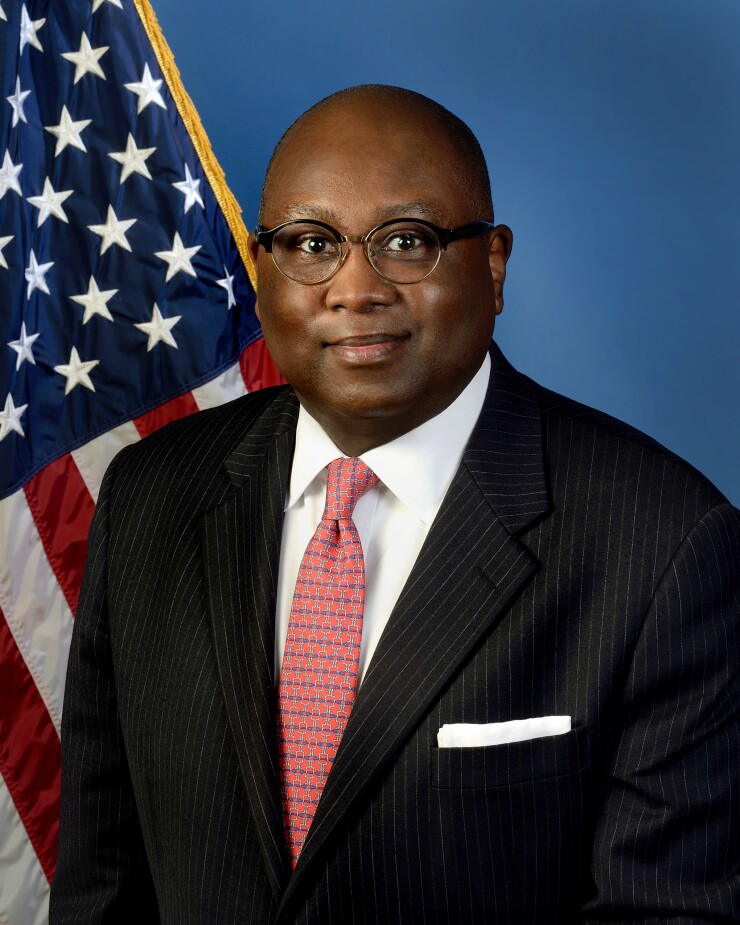Growing up in North Carolina, I was fortunate my parents taught me sound financial habits. Early lessons in the importance of careful spending and saving set me up for later success, and I’m grateful for those teachings. If you’re reading this, you likely had family or other role models who shared those lessons with you early, too.

But for too many Americans, that’s not the case: They lack a sound grounding in personal financial management, which limits their opportunity to build long-term financial independence.
We talk a lot about the importance of financial inclusion as one key to addressing the persistent social and economic inequities that plague our society. A focus on financial literacy – giving people the knowledge, skills and tools to make the best financial decisions and moves for themselves and their families – must be part of any strategy to encourage greater inclusion in today’s economy. National Financial Literacy Month, which we observe each April, is an opportunity for industry leaders, policymakers, educators and other community leaders to focus on making that strategy a reality.
It’s clear that a lack of understanding of fundamental financial principles can hurt financial inclusion. Those who lack knowledge and skills in personal financial management are less likely to accumulate savings, less likely to take advantage of opportunities to build wealth, and more likely to succumb to the allure of predatory lenders, get-rich-quick schemes and financial scams.
In 2018, the Financial Industry Regulatory Authority conducted
The FINRA study also found a growing divide between those who are prospering and those who are struggling to make ends meet. That trend was almost certainly exacerbated in the last year due to the COVID-19 pandemic and sharp economic contraction, in which the most vulnerable were the hardest hit.
Meanwhile, a
A forward-looking financial inclusion strategy will address all of these problems by bringing unbanked Americans under the protective cover of the legitimate financial services industry, while providing them with the financial literacy tools they need to make the most of the products and services available through financial institutions.
Achieving that worthy goal requires a three-pronged approach with leadership from government, the financial services industry and community-oriented organizations.
First, government leadership is important to set long-term goals and provide overall direction. For example,
The financial services industry can also make a substantial contribution to financial literacy through marketing and education efforts. Credit unions and many local banks already do a great job of this and could serve as a model. While such efforts do represent a cost center, industry leaders should view these costs as a long-term investment in their customer base. After all, customers who are more comfortable and confident with saving and using credit will be better positioned to take out a mortgage to buy a home, shop around for auto loans or even think about starting their own small business. Financial literacy is a critical first step in that direction.
Finally, we must enlist an all-too-often overlooked partner in community-based organizations, including churches, health care providers and other service providers. Sharing information and developing constructive partnerships with these entities can help these organizations to be a force-multiplier when it comes to extending financial literacy and financial inclusion efforts into underserved communities.
I’ve frequently described financial inclusion as “the civil rights challenge of our generation.” Helping people learn to manage their financial lives is inherently empowering, as over time they’ll grow more resilient to life’s inevitable financial shocks while moving up the economic ladder. National Financial Literacy Awareness Month is a good time to assess the effectiveness of our financial inclusion efforts and to focus on how we can continue to improve.





